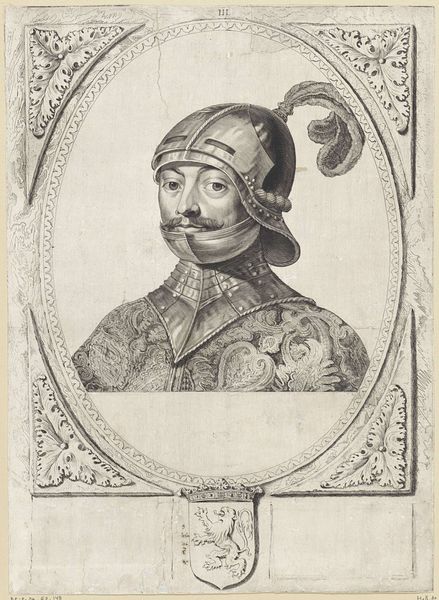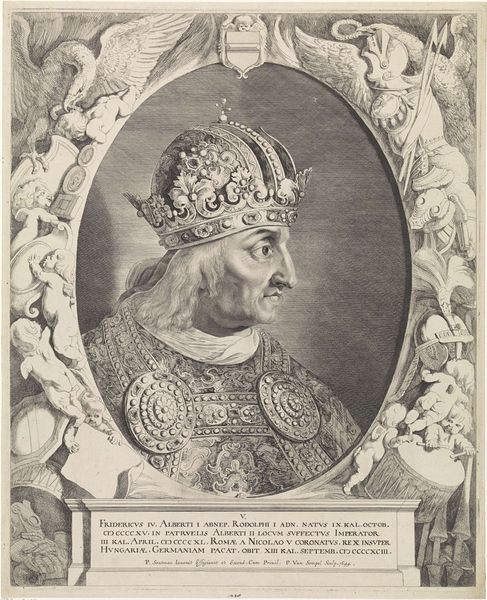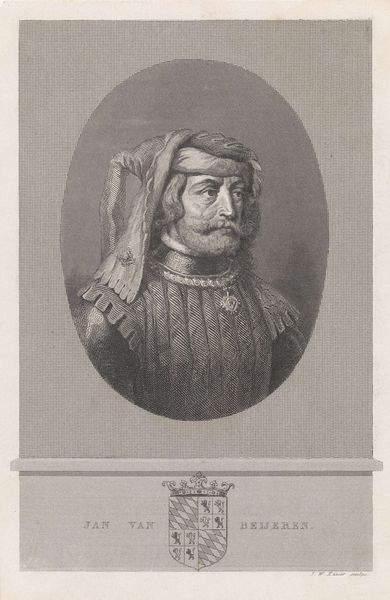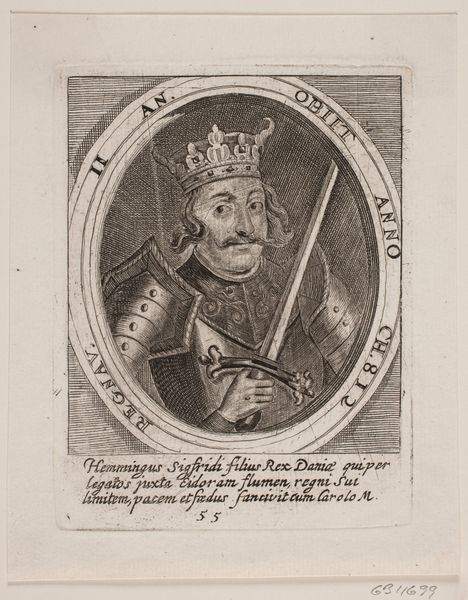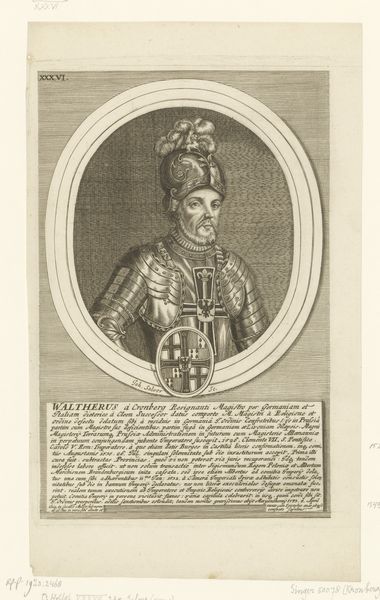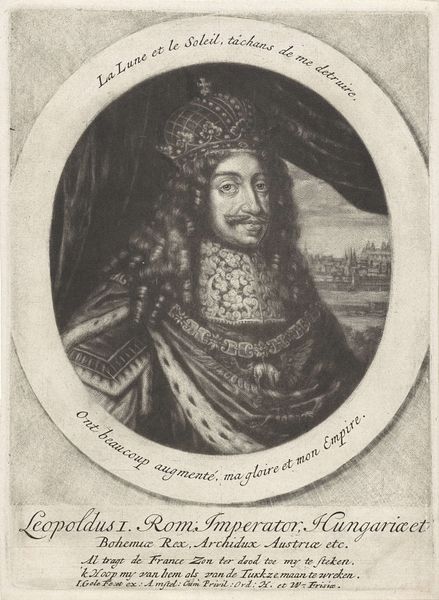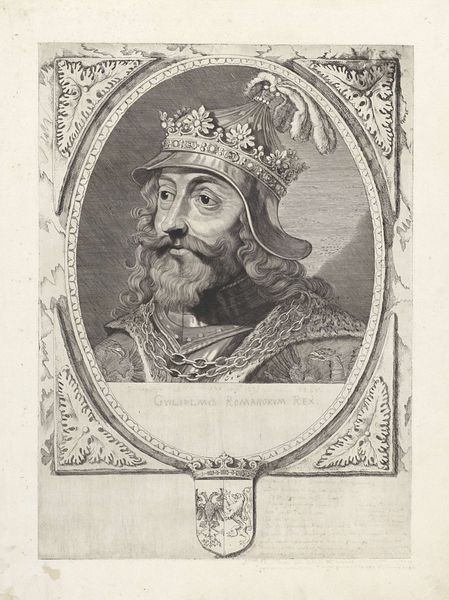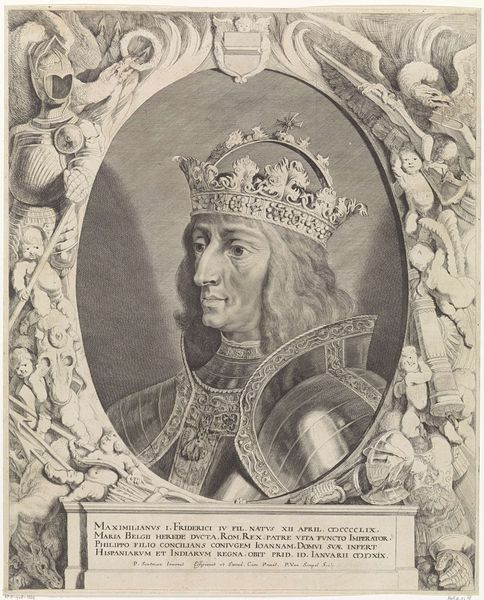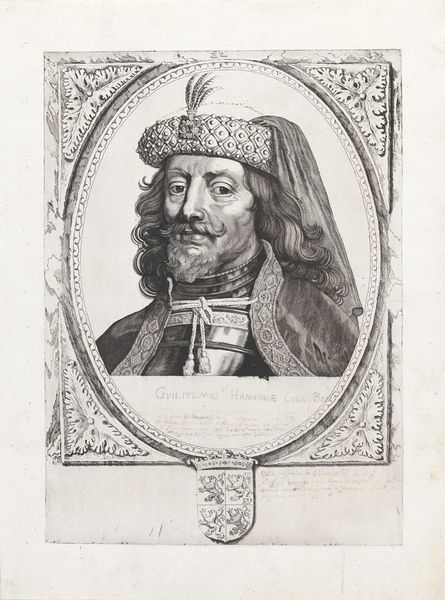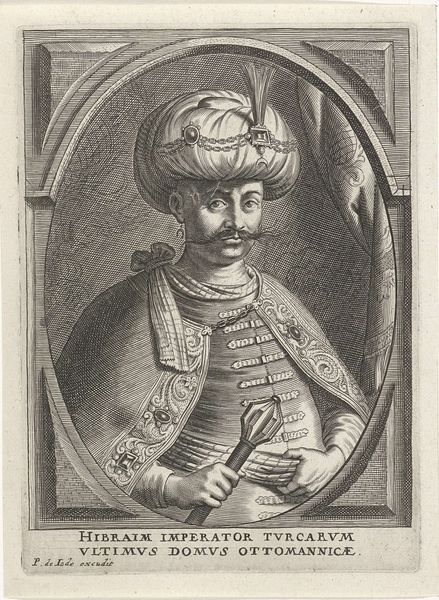
print, engraving
#
portrait
#
baroque
#
dutch-golden-age
# print
#
old engraving style
#
figuration
#
line
#
history-painting
#
engraving
Dimensions: height 405 mm, width 296 mm
Copyright: Rijks Museum: Open Domain
Curator: What catches my eye immediately is how theatrical this portrait feels. All that armor, the plumed helmet... it’s quite a statement, isn't it? Editor: Absolutely. Cornelis Visscher created this engraving of Arnulf, Count of Holland, around 1650, a work now held at the Rijksmuseum. It provides a compelling glimpse into how rulers were presented and perceived during that era, particularly within the context of the Dutch Golden Age. Curator: Tell me more about this “presentation.” I’m getting vibes of constructed masculinity, of course, but it feels deliberate, maybe performative? Editor: Exactly. Arnulf, despite his historical significance as Count, is effectively being rebranded or reinforced as a leader, a warrior, and a figure of authority. We have to consider the role engravings like this played in shaping historical narratives. They circulated widely, influencing public perceptions and legitimizing power structures. Curator: That's an interesting point. What about the actual craftsmanship, though? To me, the rigid, sharp lines and meticulous detail feel somewhat impersonal. Editor: Well, look closer. While precision is clearly a hallmark, consider the intricacy of the armor's designs or the expressive quality of Arnulf's face. Visscher managed to imbue this printed image with a sense of depth and individual character. And yes, those lines are Baroque to a 'T'! Curator: Okay, I concede on the detail! But it also speaks to the way power reproduces itself; the need to maintain the family brand—a sort of hereditary privilege screaming from the page. Editor: And you're absolutely right to pick up on how Dutch Golden Age portraiture reflects socio-political realities. Pieces such as these served not only as individual likenesses, but as carriers of a message for later generations. The careful detail extended a controlled narrative well into the future. Curator: Considering our discussions, my take away is recognizing how even seemingly straightforward historical portraits can be unpacked to expose wider issues around representation and ideology. Editor: For me, it’s a renewed appreciation for printmaking—how such techniques in capturing individuals like Arnulf transcend medium while giving new avenues of thought on society, artistry, and the self.
Comments
No comments
Be the first to comment and join the conversation on the ultimate creative platform.
